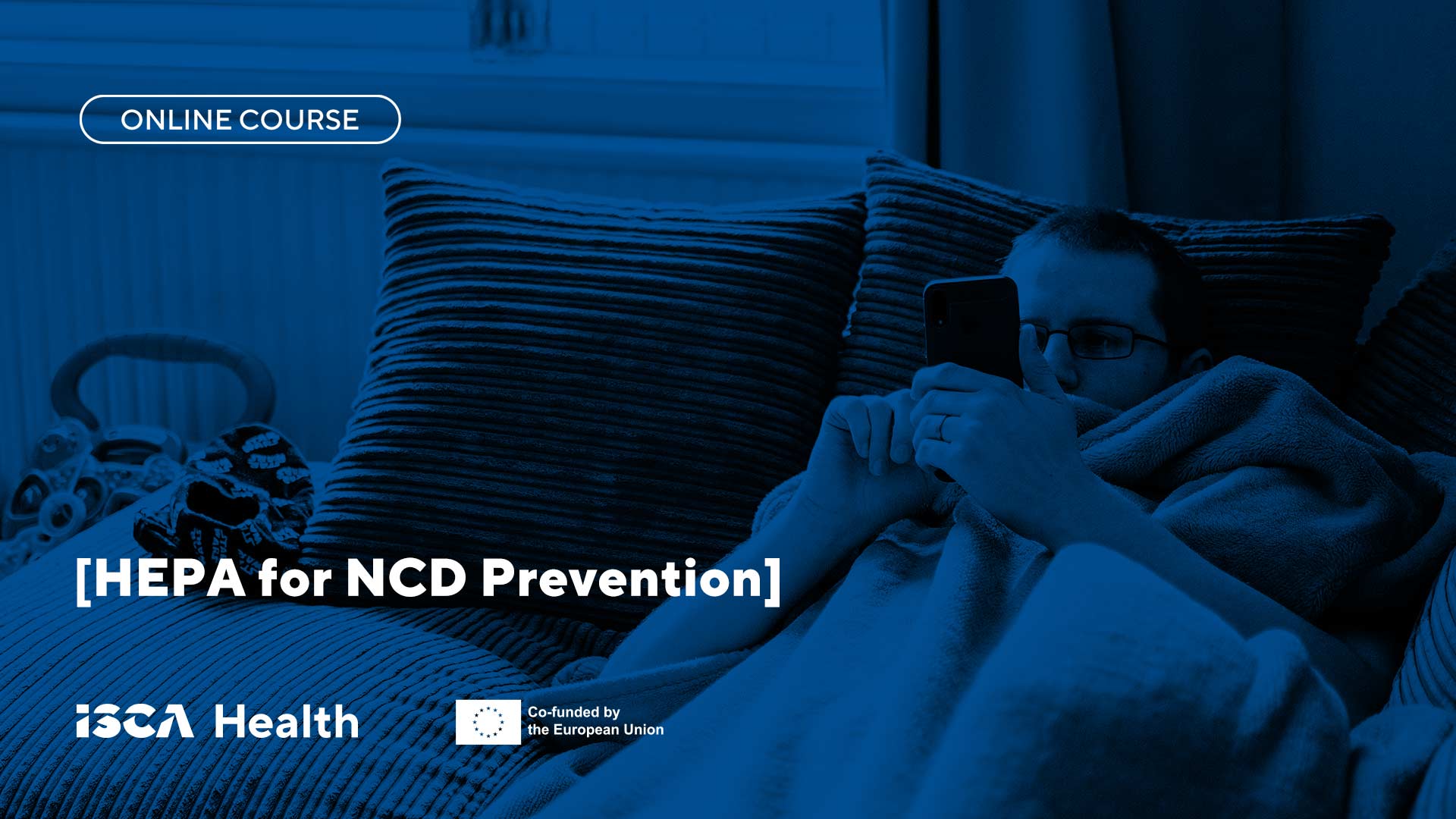Module 2: How to muscle up your game and help tackle the number 1 epidemic in the world

Non-communicable diseases (NCDs) have been the number 1 cause of death in the world. They currently kill 41 million people each year, accounting for 71% of all deaths globally. More than 15 million people between the ages of 30 and 69 die from an NCD each year; 85% of these “premature” deaths occur in low- and middle-income countries.
Noncommunicable diseases (NCDs), also known as chronic diseases, tend to be of long duration and are the result of a combination of genetic, physiological, environmental and behavioural factors.
The incidence of NCDs has dramatically increased in the last century. What’s more, during the Covid-19 pandemic, the situation has deteriorated even further, especially among the younger generation.
Cardiovascular disease, cancer, type 2 diabetes, chronic respiratory disease, depression, anxiety, obesity and musculoskeletal disorders are on the rise, which is related to the spike in physical inactivity, unhealthy food intake, tobacco use, the harmful use of alcohol, lack of sleep, mental distress and poor quality of life. All elements that relate to mental health and wellbeing (get back to Module 1 if you would like to hear more).
Currently, almost two-thirds of adults and 1 in 3 children in the WHO European Region are living with overweight or obesity (WHO European Regional Obesity Report 2022).NCDs in general threaten progress towards the 2030 Agenda for Sustainable Development, which includes a target of reducing the probability of death from any of the four main NCDs (cardiovascular diseases, cancer, chronic respiratory disease and diabetes) between ages 30 and 70 years by one third by 2030.
In addition to adverse health effects, NCDs also generate enormous costs. As demonstrated by the latest Lancet publication, 499.2 million new cases of preventable major NCDs would occur globally by 2030 if the prevalence of physical inactivity does not change, with direct healthcare costs of INT$ 524 billion! Cardiovascular diseases alone are estimated to cost the EU economy €210 billion per year. Nearly half of these new cases of NCDs (47%) will result from hypertension and 43% from depression.
This broad group of conditions accounts for the majority of the disease burden and is linked by common risk factors, underlying determinants of health and opportunities for intervention, including Health Enhancing Physical Activity (HEPA) interventions.
Physical inactivity is one of the most important risk factors for NCDs, and its importance has long been underestimated. Globally, physical inactivity costs health systems alone $27 billion per year and it is estimated that by year 2030 the cost would increase to $300 billion per year. In general it imposes economic costs of €80.4 billion per year to the EU alone and it is estimated that by the year 2030 we could see annual costs of over €125 billion (in 2012 prices). Moreover, now there is strong evidence for comprehensive health and wellbeing effects of regular physical activity across the lifespan, including social, economical and environmental benefits for all.
Module 2 of 
🔹 Warming up: Understand the basics of NCDs and HEPA while talking risk factors, prevention, health promotion, and safety concerns
🔹 Keeping the ball rolling: Change the discourse and offer for leisure time and everyday life
🔹 Cooling down and continuing: Introduce behaviour change model & stimulate adherence to healthy lifestyle practices, especially physical activity
Glossary of Key Terms
What are NCDs?
The term “non-communicable diseases” (NCDs) is used to describe a group of conditions that includes cardiovascular disease, cancer, mental health problems, diabetes mellitus, chronic respiratory disease, and musculoskeletal disorders. This broad group accounts for the majority of the disease burden and is linked by common risk factors, underlying determinants and opportunities for intervention.
Source: Gaining health: the European Strategy for the Prevention and Control of Noncommunicable Diseases. World Health Organization. Regional Office for Europe, 2006
What is physical activity?
Any bodily movement produced by skeletal muscles that require energy expenditure – including activities undertaken while working, playing, carrying out household chores, traveling, and engaging in recreational pursuits.
Source: Risk reduction of cognitive decline and dementia: WHO guidelines. World Health Organization; 2019
What is HEPA – Health Enhancing Physical Activity?
Any form of physical activity that benefits health and functional capacity without undue harm or risk.
Source: Physical activity and health in Europe: Evidence for action, World Health Organization; 2006
What is sedentary behaviour?
Any waking behaviour characterised by an energy expenditure of 1.5 METS or lower while sitting, reclining, or lying. Most desk-based office work, driving a car, and watching television are examples of sedentary behaviours.
Source: WHO guidelines on physical activity and sedentary behaviour. World Health Organization; 2020
What are disease prevention and health promotion?
Disease prevention and health promotion share many goals, and there is considerable overlap between functions. Disease prevention is understood as specific, population-based and individual-based interventions for primary and secondary (early detection) prevention, aiming to minimise the burden of diseases and associated risk factors.
Health promotion is the process of empowering people to increase control over their health and its determinants through health literacy efforts and multisectoral action to increase healthy behaviours.
Source: World Health Organization. Regional Office for the Eastern Mediterranean, 2022
The distinction between prevention and health promotion is however very important. Prevention has a pathogenetic perspective and health promotion has a salutogenic perspective. With the Ottawa Charter on Health Promotion of the WHO (1986), there has been a paradigm shift from a pathogenetic to a salutogenic perspective, which has also given much more importance to the promotion of physical activity. All modern approaches to public health promotion follow the paradigms of health promotion.
About the contributors
| Name | Profession | Organisation | Country |
| Michael Tiemann🔗 | Professor of Sport Science | SRH University of Applied Health Sciences | 🇩🇪 |
| Andrea Backović Juričan🔗 | National Health Promoter | National Institute of Public Health | 🇸🇮 |
| Pia Pauly🔗 | Head of the GYMWELT department | German Gymnastics Federation (Deutscher Turner-Bund – DTB) | 🇩🇪 |
| Heidrun Krämer🔗 | Health Sports Officer | German Gymnastics Federation (Deutscher Turner-Bund – DTB) | 🇩🇪 |
Let’s get to the core of the content.
